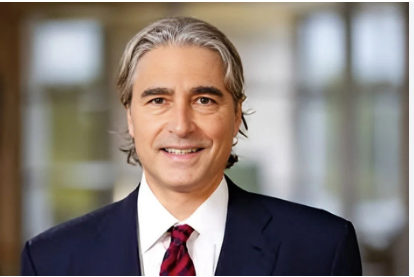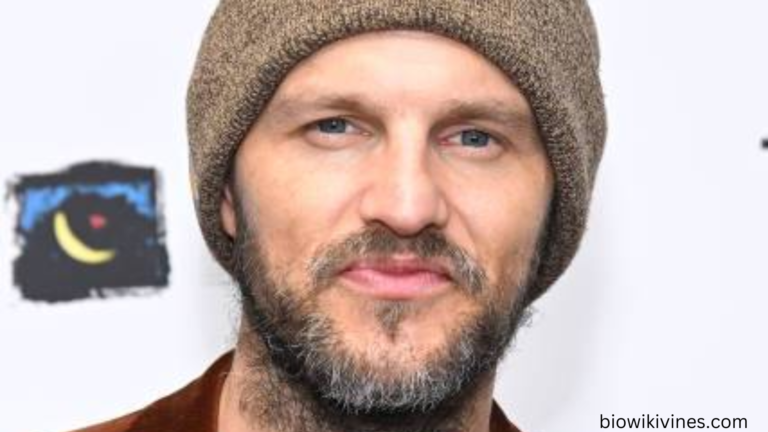Peter Palandjian Age, Net Worth, Family, Career ,height and weight 2025
Imagine the beginning with a tennis racket in the hands, and, a few years later, make the cities look like the stars, and visit the world with a big measure. That was what happened to Peter Palandjian. He was born in 1964 in Boston and began his first achievements in college and professional tennis first. He later ventured into business, where he runs a real-estate company, and currently he also runs philanthropy and civic leadership. This article chronicles his childhood, schooling, professional experience in tennis, and business development as well as his contribution in social impact. At the conclusion, you will know well the person, Peter Palandjian, what he represents and what you can gain.
Who is Peter Palandjian?
Early Life and Education Background and Family Peter Palandjian was born on 12 th February 1964, in Boston, Massachusetts. His father, Petros A. Palandjian, was an Armenian immigrant who established a construction and real-estate company in the U.S. Peter was exposed to business at a tender age as part of his growing up in this environment.
Peter Palandjian biography
| Category | Details |
|---|---|
| Full Name | Peter Palandjian |
| Date of Birth | February 12, 1964 |
| Place of Birth | Boston, Massachusetts, USA |
| Nationality | American (of Armenian descent) |
| Education | – B.A. in English Literature, Harvard University (1987) – M.B.A., Harvard Business School (1993) |
| Early Career | Professional Tennis Player (1987–1989) |
| Tennis Highlights | – Highest Singles Ranking: No. 280 (Aug 1988) – Highest Doubles Ranking: No. 175 (July 1989) – Competed in French Open, Wimbledon, and U.S. Open doubles |
| Business Career | – Former Associate at Bain & Company – Assistant to CEO, Staples Inc. – Chairman & CEO, Intercontinental Real Estate Corporation (since 1993) |
| Company Overview | Intercontinental Real Estate Corporation manages ~36 million sq. ft. across 155+ properties, with ~$14B in Gross Asset Value (as of 2023). |
| Philanthropy | – Founder, A Day for Democracy (2020) – $7.5M donation to Brigham & Women’s Hospital (2024) – Board member for multiple civic and cultural organizations |
| Spouse | Eliza Dushku (Actress, married August 18, 2018) |
| Children | Six (two with Eliza Dushku, four from a previous marriage) |
| Residence | Boston/Cambridge, Massachusetts |
| Notable Traits | Strategic leadership, civic-mindedness, philanthropy, former athlete |
| Hobbies | Tennis, music (plays the accordion), and community service |
Schooling and College
He was a student of Phillips Academy in Andover. He later joined Harvard University where he studied and got a B.A. in Literature (1987). Then he proceeded to Harvard Business School where he obtained his MBA in the year 1993.
Table: Education Timeline
- 1987 Harvard University B.A. Literature.
- Late 1980s (College tennis and pro transition)
- ~1991-1993 Harvard Business School M.B.A.
Influences and Early Interests
It is contended that the church and the Renaissance were intrinsically connected.<|human|>Influences and Early Interests It is argued that the church and the Renaissance were mutually related.
Peter played tennis in Harvard in 2 seasons and played in NCAA championships in the middle of his school life that gave him a background in competitive sporting activities coupled with business heritage that predetermined his future career of performance, leadership and strategic development. Peter Palandjian Tennis Career.
Collegiate Success
Peter was also an excellent top-level college tennis player and was studying literature at Harvard. He became the number one player of the team in both singles and doubles and had become a professional player.
Professional Play
- Around the year 1987, he became a professional.
- Peak singles: No. 280 (August 15 1988).
- Peak doubles positions: 175 (July 10 1989).
- He also played in Grand Slam events as a doubles player (e.g. French Open, Wimbledon, US Open).
- In 1989, he left the full-time play.
Table: Tennis Career Highlights
- Category Achievement
- Singles Ranking No. 280 (Aug 1988)
- Doubles Ranking No. 175 (July 1989)
- Grand Slams Main draw in doubles at French Open, wimbledon and US open.
- Retirement 1989
What His Tennis Career Bestowed
His tennis experience taught him to be disciplined, strong in the situation, be a team player (when playing doubles) or individual. Those attributes were transferred to business leadership. Second, international competition also gave a global mind. Business Career: Consulting to Leading Real-Estate.
Early Business Roles
Peter left professional tennis after which he was employed as an Associate at consultancy Bain and Company. Thereafter, he served as assistant to the CEO at Staples, Inc. when he was studying at Harvard Business School.
Turning to Real Estate
He was appointed Chairman and CEO of Intercontinental Real Estate Corporation in 1993 (Boston). His management changed the business of the firm to institutional real-estate investment management as opposed to a construction/integration business.
Under his leadership,
Company profile is as follows. Portfolio: 36 million+ sq ft, more than 155 properties, 15,000+ multifamily units, NAV approximated to be at 10B+, GAV approximated to be at 14B+ (as of 2023). Investment strategy: Fund-based institutional (pension funds, endowment) institutional real estate management.
Table: Intercontinental Real Estate
- Metric Value
- Portfolio size (sq ft) Approximately 36 million sq ft
- Number of properties ~155
- Multifamily units 15,000+
- Net Asset Value (NAV) ~$10 billion
- Gross Asset Value (GAV) ~$14 billion
Leadership Style & Strategy change
Peter stressed on long term institutional capital, disciplined growth and diversification of assets geographically/products. On a presentation, he pointed to trends in growth in vacancy and rents across sectors: e.g. industrial vacancy 7.3 percent in Q4 2017 vs. retail 9.6 percent. He also focused on culture, teamwork and credited the family at his firm. Civic Responsibility and Charity.
Non-Profit Involvement
Peter is Board of Directors in many organizations: Boston Symphony Orchestra (co-Chair Board of Overseers), Dana-Farber Cancer institute, Los Angeles Alliance for a New Economy (LAANE), Mikva Challenge, Purple Heart Service Foundation, and others.
A Day for Democracy Initiative
In 2020 he launched the non-partisan project A Day for Democracy which asks companies to give their employees time to vote, register their ballots and create awareness. More than 300 companies with more than 1 million employees committed in the beginning.
Major Philanthropic Gift
In 2024, Peter and his wife, Eliza Dushku, donated to Brigham & Women’s Hospital a clinic to help with addiction and mental-health treatment, donating 7.5 million dollars. The present also established the “Palandjian Bridge Clinic.
Why It Matters
This demonstrates that Peter Palandjian goes beyond leading business to use his position and resources to change and improve the lives of civilians and healthcare. His performance to purpose values come through his philanthropic approach.
Significant Accomplishments
- Born 1964 in Boston, Massachusetts.
- 1983-1987 Harvard University (tennis), attended
- 1987 Became a professional in tennis.
- 1988-1989 Reached career high rankings and retired out of pro tennis.
- 1993 Was made CEO of Intercontinental Real Estate Corporation.
- 2020 Introduced A Day for Democracy.
- 2024 Big philanthropic donation to Brigham and Women Hospital.
Personal Life & Interests
Peter is a resident of Boston/Cambridge. He married actress Eliza Dushku since August 18 2018. The two have two sons (born 2019 and 2021 respectively). He is also a father of four children who are a result of a former marriage.
His business hobbies are not the only ones, as he is a tennis fan (obviously), a leader, a civic and a philanthropic individual. Previous profiles state that he plays an accordion as a hobby.
Peter Palandjian Real-Estate
- Peter has given his contribution on the state and direction of the real-estate market.
- Vacancy rates: Office vacancy as of late 2017 was at office = -13per cent, industrial = -7.3per cent, retail = -9.6per cent.
- Rent growth: In five years preceding, industrial rent increased at an average annual rate of 4.6; multifamily 3.7.
- Strategy: His firm shifted to institutional capital, institutionalized funds, diversified assets and geography as opposed to doing business solely on a local basis.
- These perceptions indicate that he cherishes data-based decision making and long-term investment horizon and not speculation.
Challenges and Criticisms
There is no leadership path that is free of challenges. In Peter Palandjian: In 2024, his company encountered protests in Cambridge due to its engagement in renting out property to controversial tenants (e.g. Israeli defence company).
The real-estate markets are experiencing headwinds: remote work, disruption of the retail, increasing interest rates. These tendencies were mentioned in his previous slides. He shows how leadership is about uncertainty by identifying them in the open and creating a diversified strategy.
Experience of Peter Palandjian
- We can learn a few lessons off the footsteps of Peter:
- The skills learned in athletics are transferable in business: the ability to work, be focused, be resilient.
- Credibility and network was backed by a solid education background (Harvard BA, MBA).
- The mode of being the leader of a company whose legacy is enormous but shifting into the realm of modern institutional real-estate demonstrates the importance of adjustment.
- Civic interest is important: his involvement in A Day for Democracy and health philanthropy demonstrates greater intent than profit.
- Identification of risk and opportunity in market cycles: the vacancy statistics, rent growth pattern and movement of capital are indicators of his strategic thinking.
Peter Palandjian Legacy
By this time, Peter is a reputable real-estate investor, a citizen and a family man. His company is a large asset, he is a member of numerous boards, and his positions are both indicative of business achievement and contribution to society.
In the future, his capacity to navigate through shifting real-estate environments, embrace technology/innovation in the real-estate investing, and additional influence in philanthropy will define his future legacy. His career is an example to those who want to be leaders in real-estate or business people who care about the city they live in.
Conclusion
When we consider a life of Peter Palandjian we get a glimpse of how he went out of the competitive tennis courts, to the board rooms of big real-estate investment, and then to the world of civic leadership and philanthropy. His early training in sport, good academic background, business extension and service to the community are all indicators of a multi-faceted leader.
His biography teaches that being a successful person does not only mean becoming wealthy, but it is also about opportunity utilization, institutionalizing, and giving back. The direction that Peter Palandjian takes is based on performance, strategy and purpose- which all have an aspect of meaningful long term impact.
FAQs
1.What is the tennis history of Peter Palandjian and how has it impacted on his business career?
Peter Palandjian was a two-time captain of the Harvard tennis team, competed in NCAA championships, and reached as high as No 280 ranking in singles and No. 175 ranking in doubles. The discipline, competitive thinking and stamina he used in his business leadership were a product of his tennis career.
2.What kind of a company is Intercontinental Real Estate Corporation and how Peter Palandjian has influenced it?
The Intercontinental Real Estate Corporation is a Boston-based real-estate investment management company. The company changed under the leadership of Peter Palandjian since 1993 to shift out of the construction/contracting business into institutional private-equity real-estate funds, which grew to tens of billions of dollars in a portfolio.
3.What is Peter Palandjian doing as far as philanthropy and civic activities are concerned?
He also established A Day for Democracy, an activity that creates a place where employers would allow their employees to have some time to vote or help in voter registration. He and his wife gave a donation of $7.5 million to Brigham and Women Hospital of addiction and mental-health treatment.
4.What personal life information does Peter Palandjian have?
Peter Palandjian was born to Boston in 1964. He has two sons with Eliza Dushku whom he married in August 2018; and four children of a former marriage.
5.What can the real-estate investors learn out of the strategy of Peter Palandjian?
Based on the approach of Peter Palandjian, the following can be learned by investors: pursue institutional capital and long-term horizons; diversify both forms of assets and geographical locations; observe macro trends such as vacancy and rent growth; strong culture and governance; business aligned with greater societal purpose.







